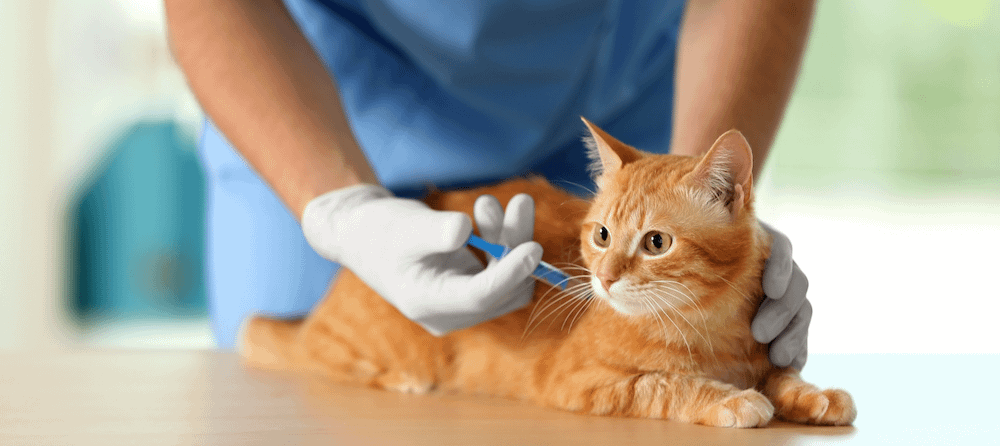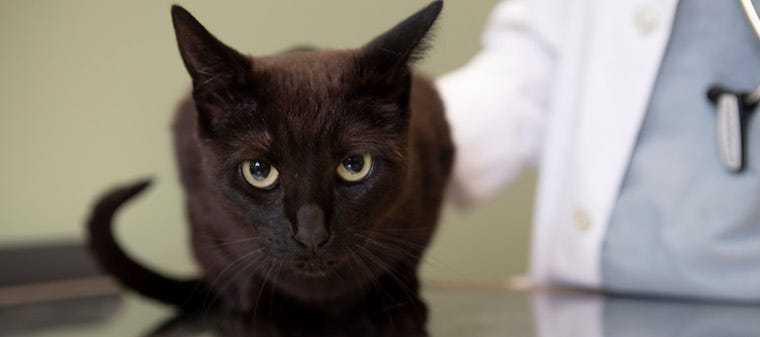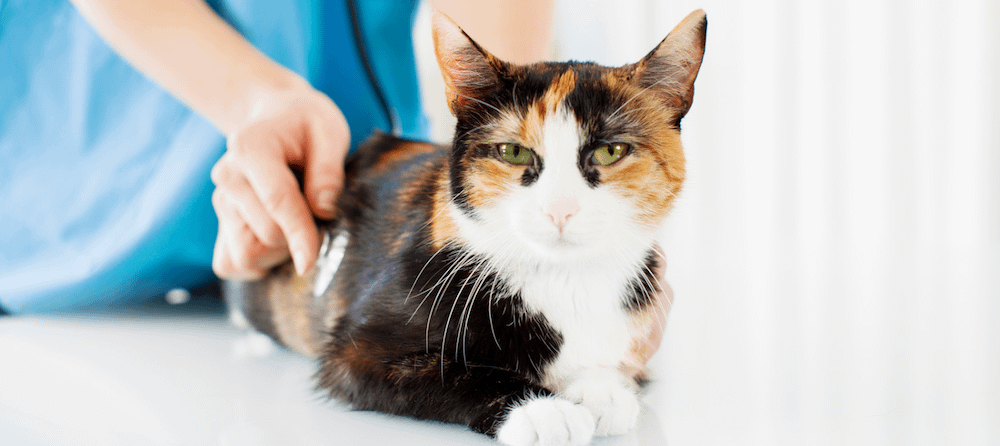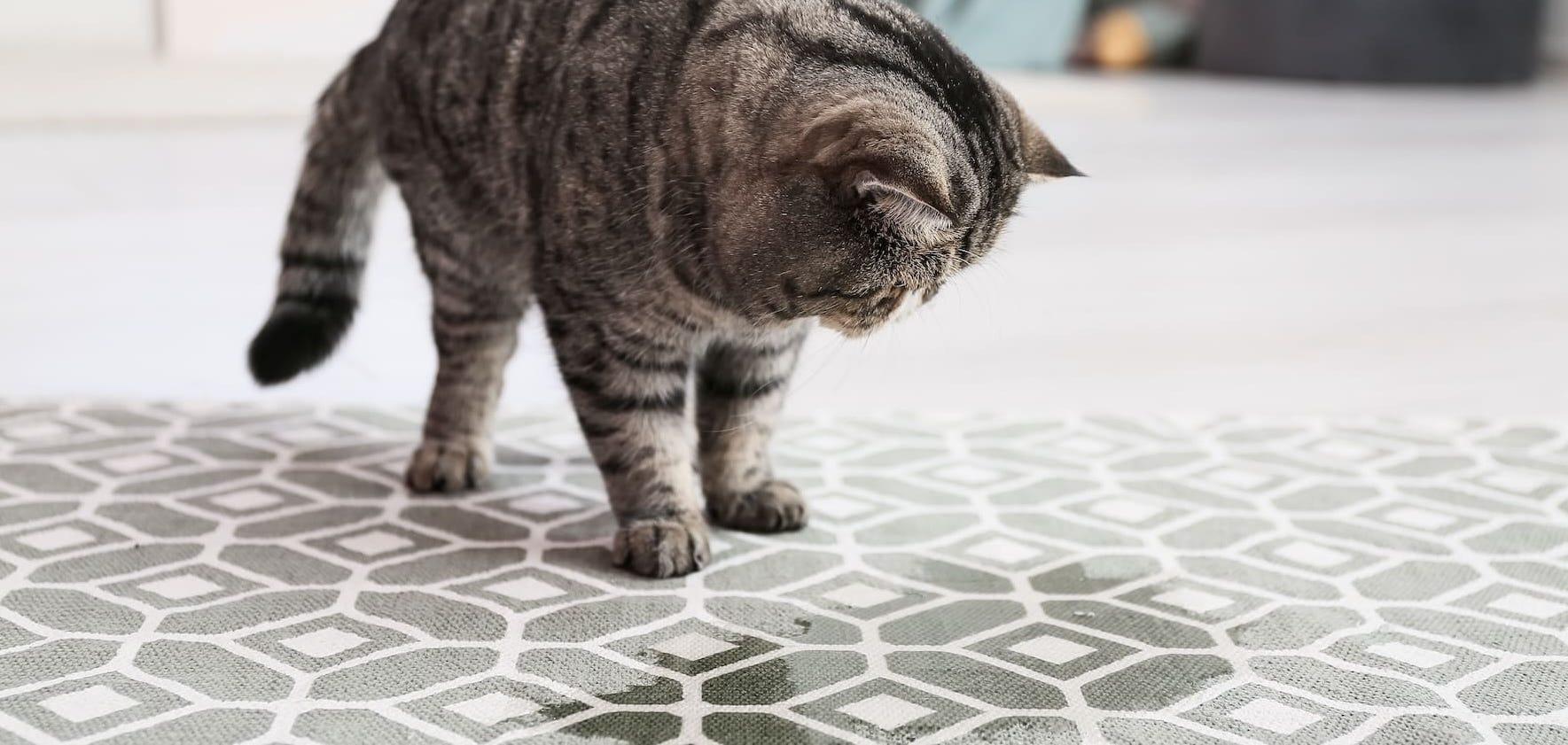“Should I bring my pet in because of X?” All veterinary clinics everywhere are fielding this question many times a day. While the decision is always ultimately yours, there are several reasons why you might be inclined to take your cat to the vet. We’ve covered how often you take a cat to the vet, now let’s take a look at some of the most common reasons to visit the vet, regardless of life stage.
Wellness checks
Wellness checks are part of your cat’s annual vet checkup; they may include things like vaccine boosters, physical exams, flea/tick treatment, heartworm prevention, and more. If you are unsure as to how often you should be scheduling a wellness check for your cat, read the latest recommendations. Don’t hesitate to schedule a wellness check or sick appointment if you notice your cat acting out of the ordinary or showing symptoms that something might be amiss.
These thorough physical exams allow your veterinarian to assess how your cat is functioning. It can be useful in spotting abnormalities or figuring out what kind of further testing can be done to help your cat.
One particularly important part of the head-to-tail checkup also monitors for the possibility of dental diseases. Dental care is a very important part of pet ownership that is often overlooked until there is a problem. Besides at-home care with teeth brushing, water additives, and dental chews, it is recommended that your cat have their teeth professionally cleaned under general anesthesia every 1 to 2 years.
In addition to staying on top of your cat’s health, these regular checkups are also great for asking questions to calm your mind and ease anxiety you might otherwise have.
Litter box problems
One of the most common reasons to take your cat to the vet outside of wellness exams is if they’re experiencing litter box problems. Whether your cat is urinating outside the litter box, making multiple trips to the litter box without using it, experiencing constipation, diarrhea, or more—get to your vet, stat! This could very quickly become an emergency.
Some common causes of litter box issues are stress, urinary tract infections, urinary stones, dehydration, diarrhea, inflammatory bowel disease, kidney disease, or thyroid disease. Because so many disease processes can result in your cat having a hard time in the litter box, it is important to pay attention to your cat’s bathroom habits and seek medical attention to investigate.
A convenient, effective way to monitor your cat’s litter box habits is with a WiFi-enabled, self-cleaning litter box like Litter-Robot! The Whisker app allows you to view how often your cat is going to the litter box and compare it with recent usage stats. With the smart litter box Litter-Robot 4, you can also monitor your cat’s weight. The waste drawer makes it easy to get a fecal sample to take with you to your vet appointment.
Vomiting or diarrhea
Contrary to popular belief, cat vomiting is NOT normal. If your cat is vomiting more than 1-2 times per month, it’s worth talking to your veterinarian to make sure it isn’t due to a medical condition. Cat vomiting can require an extensive work-up to rule in and rule out diseases, but it is essential and necessary because vomiting is often a sign of untreated, underlying disease. In preparation for that vet appointment, it is okay and often recommended to take pictures and videos; most vets do not mind, and these can provide valuable information.
The same goes for diarrhea: it is not normal and a cause should be determined and treated if indicated. Oftentimes, stress or food changes can cause diarrhea. While it is reasonable to think that your cat may get bored of their food, and many do, slowly transition your cat to the new food. Vets like to use the “Quarter(¼) Rule”: introduce the new food in quarters. Over about a week’s time, start with 75% of the old food and 25% of the new food. Then 50/50 of each followed by 75% new food and 25% old until you get to 100% of the new food. If the new type of cat food doesn’t help with diarrhea, it’s time to see your vet.
Additionally, if your cat is vomiting or having diarrhea frequently, keep an eye out for how much water they are drinking because they’re more likely to become dehydrated. Both of these processes can quickly deplete their body of fluids and fluid replacement may be recommended to aid your cat in feeling better.
Weight loss or not eating
Weight loss in companion animals like cats and dogs is not the same as weight loss in humans: if you lose a pound here and there, it’s no big deal. If your cat loses a pound, it’s time to get the vet. Objectively, the average adult cat weight is 6 to 12 lbs with factors such as gender, breed, and age all playing a role. Like many of the other vague symptoms that our cats typically present for, your cat losing weight could stem from many causes, some of which are easily treatable. Others, less so. It is recommended that you get to your vet right away because the sooner diagnosed, the sooner treated.
In performing the physical exam, your veterinarian will assess your cat’s body condition score: this will take into account their muscle mass, body fat, and both physical and visual assessment of their weight. Routine veterinary visits come in handy in these cases because your vet typically can track your cat's weight as well and either offer you peace of mind that their weight is stable or confirm your suspicions and make recommendations.
Similarly, if you notice your cat not eating for a couple of days, try to get to your vet ASAP. Unfortunately, this is often overlooked, but cats eating regularly is especially important because cats can only go a few days without eating before they can develop fatty changes in their liver. This is called hepatic lipidosis, which can be life-threatening if not treated promptly and aggressively.
Obesity
Unfortunately, obesity is common among house cats. You should regularly assess your cat’s body condition score at home. Your vet assesses this at every appointment, but you can keep tabs on it too. If you can’t easily feel your cat’s ribs, view a clear waistline from above, or see a visible tummy tuck from the side, your cat may be overweight or obese.
Much like in humans, obesity predisposes cats to so many health problems. Obese cats are 4.5x more likely to develop diabetes: this disease process requires regular medication application underneath the skin and frequent vet visits until it is under control.
Sadly, obese cats are 2x more likely to die at a younger age. Your vet can offer advice on getting your cat back on track to a healthy weight. This can often be achieved with diet changes and increased exercise. Yes, you can encourage exercise in your cat.
Changes in mobility or decreased activity
Obese cats are 7x more likely to develop musculoskeletal problems: joint diseases such as osteoarthritis and ligament tears can greatly impact your cat's ability to get around. There are supplements, medications, and even surgeries that can address these issues, but weight loss is still a staple of treatment.
Cats that are young and an appropriate weight can also have mobility issues. Keep an eye out for changes in mobility, altered gait, being slower to jump, acting stiff, and decreased activity in general. If you notice these signs in your cat, contact your veterinarian.
Increased drinking or excessive thirst
If you notice your cat hanging around the water bowl, drinking excessively while still appearing dehydrated, or leaving giant clumps of urine in the litter box, this is a good indication to make a visit to the vet. Vague as it may seem, these could be signs indicating kidney disease, hyperthyroidism, or feline lower urinary tract disease. It’s best to get this sorted out immediately so that a treatment plan can be created and implemented. Many diseases can be managed with the appropriate medications, diets, supplements, and lifestyle changes.
Behavioral issues
Behavioral changes are just as important as physical changes: if your cat suddenly seems more aggressive, more fearful, or is acting out in some way, it is time to get your vet’s advice.
This could be related to a new family member at home (four-legged or two-legged), an underlying medical condition, and more. The solution can be as simple as environmental engineering at home or it may require some testing and treatment. The more quickly the change is addressed, the faster we can get your cat back to being comfortable and happy.
Lumps and bumps
If one day you are petting your cat and feel an abnormal bump or lump, you may want to give your vet a call. Whether it’s simply swelling from bumping into something, or something more concerning like cancer growth, getting to the bottom of the problem fast is essential. A physical exam does not give enough information to give a definitive diagnosis or treatment plan: your vet might need to perform a cytology, biopsy, surgery or prescribe medication to your cat to help with the issue.
Have you ever noticed some swelling or a bump after your cat gets vaccines? Your veterinarian will often administer these as far down on your cat’s leg in case of the formation of injection site sarcomas. Also called fibrosarcomas, these rare tumors can develop at injection sites and while they don’t typically spread, they can. In most cases, treatment is surgical excision or limb amputation. It is recommended that you monitor any lumps or swellings that occur at vaccine sites using the “3-2-1” rule: if it (1) remains present 3 months after vaccination, (2) is larger than 2 cm in diameter, or (3) is increasing in size 1 month after vaccination, schedule an appointment with your vet immediately.
Cat emergencies
Because cats have such stoic natures, they often don’t show clinical signs of illness until it’s severe. And because cats hide their signs, even subtle signs (like hiding) may warrant an emergency visit to the ER veterinarian. You know your cat best, and if they begin to act abnormally, you should likely notice.
Here are some general guidelines on when you should seek immediate veterinary attention—even if it’s in the middle of the night.
- Hiding in unusual places
- Difficulty breathing: panting, open-mouth breathing, a respiratory rate of over 50 breaths/minute (Hint: count the number of breaths in 15 seconds and multiply by four to get the total breaths per minute.)
- Not moving and lying in one spot
- Crying out in pain
- Being acutely paralyzed
- Any trauma: animal fight, hit by a car, etc.
- Any poisoning
- Excessive drooling or foaming at the mouth
- Any seizure activity
- Making multiple trips to the litter box with no urine coming out (especially if there’s no urine at all in the litter box for more than 24 to 36 hours)
- Straining to urinate or defecate in front of you or in unusual places
- Excessive grooming of the hind end, with the penis sticking out: may be due to a life-threatening feline urethral obstruction or urinary blockage
- Profuse vomiting: more than 6 to 12 times in a 12- to 24-hour period
- Not eating for several days
- Lying near the water bowl and drinking excessively but still appearing dehydrated
- Any string hanging out of any orifice: please do NOT pull — leave this to veterinary professionals
Why does my cat not like the vet?
Most cats find vet visits stressful—if not downright traumatizing. If the veterinary staff tells you that your cat is having a hard time in the treatment area, please know that it is not a reflection of you, but a fear response that is very common and can often be accommodated with some teamwork.
Between the car ride in their carrier, the exposure to strange barking dogs and crying cats, and being poked and prodded by the veterinarian, can you blame them?
Here are a few tips on how to prepare your cat for their vet visit:
- Set out their carried 1 to 2 weeks before their appointment to allow them to acclimate to it. Sprinkle some catnip and treats in the carrier once a day to entice your cat to enter on their own accord.
- Talk to your veterinarian about anti-anxiety medication options: There are natural cat-calming pheromone products such as Feliway, or your vet may recommend a safe prescription medication called gabapentin.
Does pet insurance cover vet checkups?
It depends. The type of coverage that you get on vet checkups depends on what pet insurance you choose—some insurance only covers emergency care, while others provide preventative care such as vaccines and wellness visits. Typically, it’s less expensive when you get pet insurance while your cat is young, as compared to older cats that have a higher risk of cancer, kidney failure, thyroid problems, heart disease, and more.
Can you negotiate vet bills?
In short: no. It is not typical practice to negotiate vet bills. Know that having a pet can be an extremely costly thing, especially if there are health concerns that come up. Vets often recommend investing in pet insurance as soon as you adopt a new pet and setting aside funds to cover vet bills in case of emergencies.
Your veterinarian wants to help
There are countless reasons to see your veterinarian more often than for wellness visits. Depending on your cat’s life stage, lifestyle, and health habits, it’s good to have your vet’s phone number handy at any time.
When scheduling appointments, please be mindful that the veterinary field is experiencing a shortage of both vets and staff: everyone is doing their best to tend to your pets. If your general practice veterinarian cannot get your cat in quickly, please consult with other practices that may have more availability or visit your local emergency facility.
Sources:
- Retrospective Evaluation Of Risk Factors And Treatment Outcome Predictors In
- Cats Presenting To The Emergency Room For Constipation | NCBI
- Hepatic Lipidosis | Cornell University College of Veterinary Medicine
- Feline Lower Urinary Tract Disease | American Veterinary Medical Association
- Pain and Problem Behavior in Cats and Dogs | Animals | MDPI
- Dental Disorders of Cats - Cat Owners | Merck Veterinary Manual
- Inflammatory Bowel Disease
- Feline Behavior Problems: House Soiling
- Purina Body Condition Tool
- Injection-site Sarcomas in the Cat







